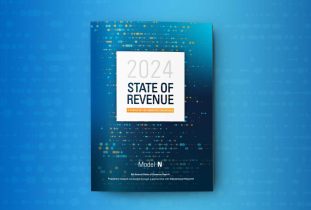In the first Blog Post of this Series I provided an overview of the different Front Office and Back Office Process Flows and the capabilities that these Systems offer. In this Blog Post we will look at key considerations for a seamless flow of business information between Front Office and Back Office Systems.
Let us start by looking at the business information that is used in Front Office (CPQ/QTC) and Back Office (ERP) Systems
-
- Business Logic (e.g. Pricing Logic, Product Configuration Rules)
- Business Data
- Master Data (e.g. Material Master Data, Customer Master Data)
- Transactional Data (e.g. Quote Data)
Note: The System of Record for Master Data and (at least some) Business Logic is often the Back Office System.
If we use the same business information in the Front Office and Back Office Systems we have to determine if a single System of Record for this information is required or if multiple System (sources) are acceptable.
If we assume that a single System of Record for all of a Company’s business information is important then we need a plan that shows how this one source can be accessed in a timely manner by both systems.
If multiple Systems of business information are acceptable then we need to come up with a plan that shows how we will keep these multiple Systems in sync!
The way the business information is processed between Front Office and Back Office Systems will have a big impact on the Performance, Scalability, User Experience and the Project budget. Generally speaking it is advisable to avoid duplication of effort and (unnecessary) complexity by using the strengths of both Systems to get the best possible business outcome for the lowest possible price.
Here are some important considerations to keep in mind when you look to find the most effective Front Office / Back Office Solution to improve your business’s Sales Process.
1. What CRM Platform do you (want to) use?
Many CPQ and QTC Solutions are built for a specific CRM platform like Salesforce, Microsoft, Oracle or SAP. On these CRM platforms there are native and non-native Applications (Apps).
Definition:
Native App: A native app is one that sits on, and is part of the CRM platform. All the Data that it uses is on the CRM platform
Non-Native App: Is not 100% on the CRM platform. The App, or part of the App, may be somewhere external and the data, or part of the data, may be external
Here some key advantages and disadvantages that are important with regards to where the Business Information resides
Advantages (native apps)
- Higher Security because the business data is always stored on the CRM platform (not on an external server)
- Application and hence Business Logic sits on CRM platform (this can also be a disadvantage!)
- Better Performance because Business Data & Logic reside on CRM platform
- Easier integration with other Apps
Disadvantages
- Native Apps may inherit limitations from CRM platform
- Integration with other CRM Systems is harder
- Every CRM user that uses a native CPQ / QTC Solutions for that CRM platform needs a license
2. How are you planning to sell your Products & Services?
If you plan to sell via all three Routes-to-Market aka Omni Channel (1. your Sales Team, 2. your Channel Partners and 3. an ecommerce website) then keep in mind that all Routes have different user experience expectations that impact the flow of business information between Front Office and Back Office Solutions
Sales Team Expectations (= frequent users)
- Fast Performance
- Help (limited), if any
- Receive guidance concerning Product Configuration and Pricing
Channel Partner Teams (= frequent and infrequent users)
- Fast Performance
- Help (Channel Partner specific) e.g. show documents, images, videos as needed
- Receive guidance concerning Product Configuration and Pricing for Channel Partners
Ecommerce website (Customer = occasional user)
- Fast Performance
- Full Help e.g. show documents, images, videos, chat capability
- Receive guidance concerning complete Product Offering
A solid, scalable and performance oriented process is required that ensures the required business information is available as needed.
3. Do you need Contract Lifecycle Management (CLM)?
Definition:
CLM enables a Sales Organization to coordinate contract creation, approvals, negotiation and execution with customers and multiple parties within the company, and to manage all contracts in one place. Some contract examples are a Non-Disclosure Agreement (NDA), Sales Contract (terms & conditions) and Statement of Work (SOW).
Not all businesses require complex contract negotiations, however, those that do can benefit significantly from a solution that automates the full contract lifecycle. CLM solutions are similar to CPQ and QTC in that they are often designed for a specific CRM solution. Hence look at point 1
4. Do you have an existing Back Office Order Management System?
Most large businesses have made significant investments in ERP Systems. These Systems automate the Order to Cash process and have Functionality for managing the order lifecycle, credit checks, invoicing, billing and cash management, with ties directly into the corporate financial accounting and reporting systems.
For companies with limited Order to Cash Infrastructure a Quote to Cash Project may be an opportunity to build out these capabilities. For companies with Back Office systems in place, consideration should be placed on using that existing system as much as possible. Particular attention should be placed on generating orders where the complete Product Configuration and pricing logic is needed in the ERP System.
Note that some CPQ and QTC Solutions may replicate the Business Logic from the Back Office System to the Front Office System by developing and maintaining a simulation of that business logic to keep both systems in sync. While this is possible and has been done in the past it is obviously not good since it typically decreases quality and increases costs.
Summary
To determine how your business information can be optimally used between Front Office and Back Office Systems you should determine
- What level of functionality is required for each Process Step?
- How do you plan to leverage or replace existing Systems?
- Where your Business Logic & Data should be stored
- When you need to access your Business Logic & Data
- What are the performance expectations for accessing business information?
- What User Experience you want for every Route to Market (RTM = Sales Team, Channel Partners, ecommerce)
- Who is performing the required work (one-time, ongoing) to ensure your business information is in the right system at the right time?
- If you require an out-of-the-box solution to use business information on your Front Office and Back Office Systems? Or do you plan on doing some custom development?
If you think about using real-time calls from your Front Office to your Back Office then keep in mind that your Back Office System needs to be available for real-time calls and be able to handle the expected workload. While transparency typically improves user/customer satisfaction a compromise may be needed.
















